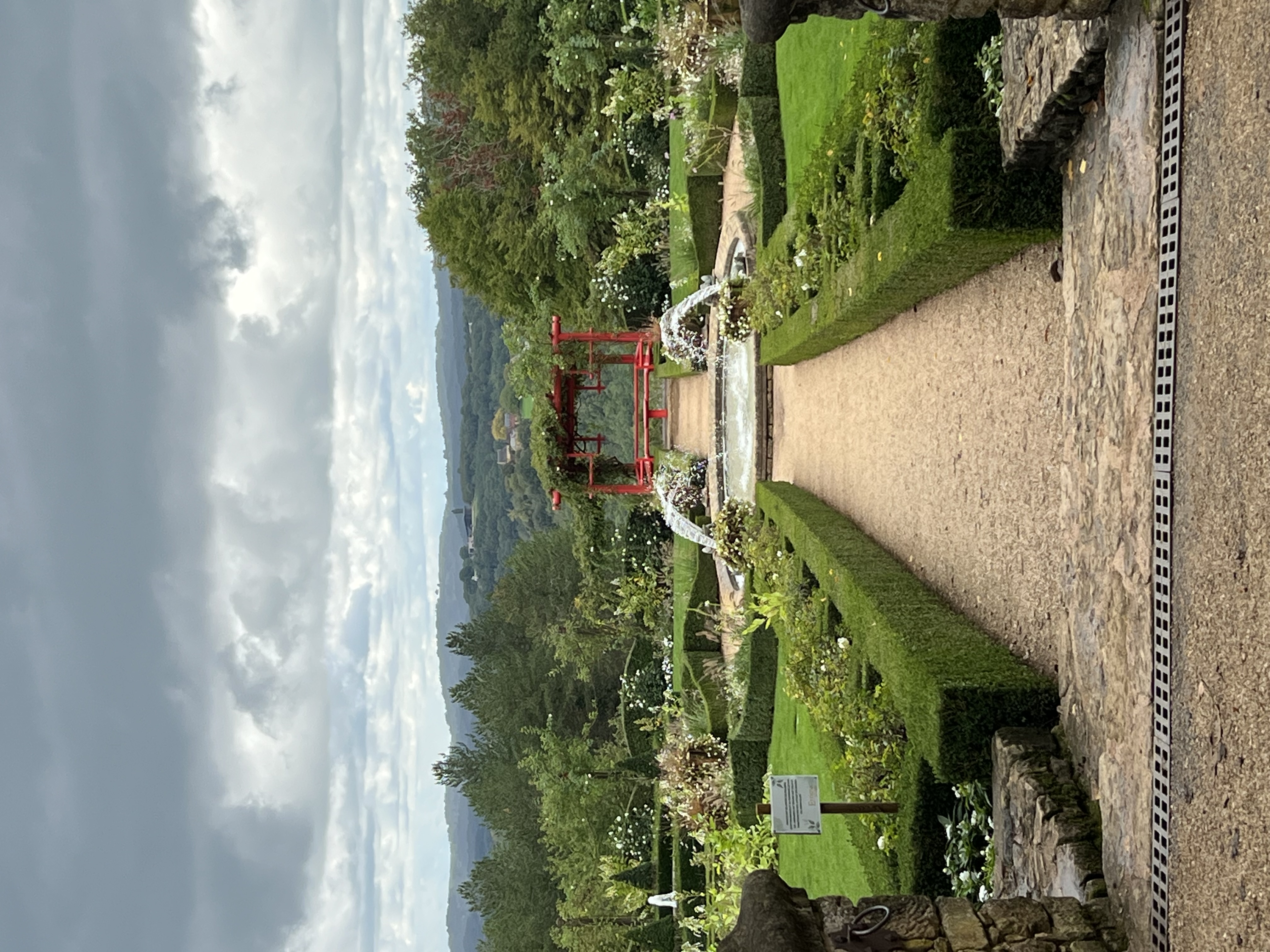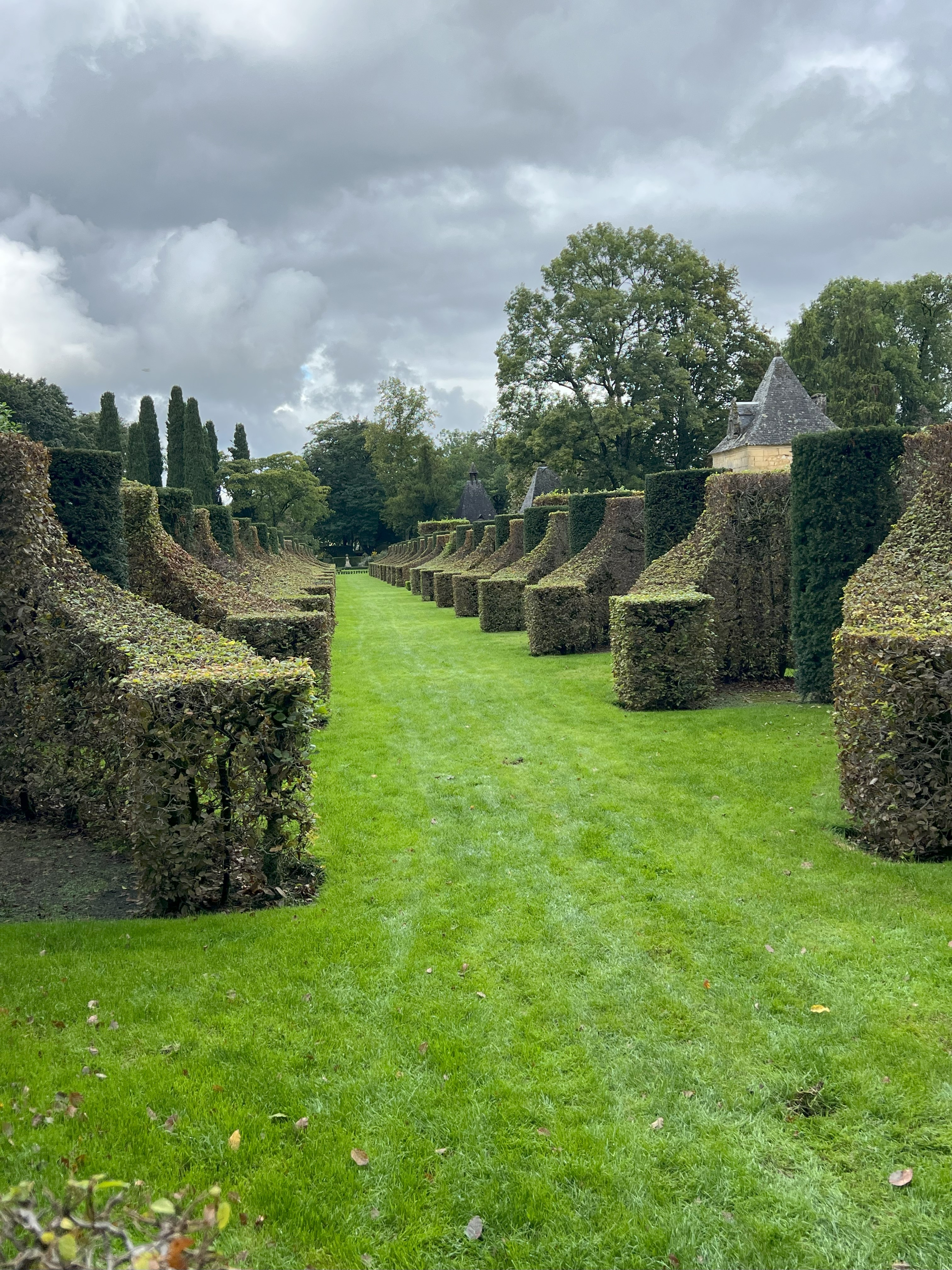October 2025
Fair Stood the Wind for France


It’s been a few years since my wife and I ventured over the English Channel and visited the beautiful rolling agricultural countryside where the Dordogne merges into the Lot et Garrone.
I had forgotten just how easy it is to drive in France where the traffic is light in relation to the amount of space available and where the motorways and main roads seem in good repair with few hold ups.
Much of the endless vineyards had already been picked, early this year, by the time we arrived in the second week of September. The talk by the wine makers at some of the Chateaux we called in at between Bordeaux and Bergerac is that 2025 with be declared a vintage. Years that end in 5 this century all have been great vintages, apparently.
Other than grapes the main crop is Sunflowers. Fields and fields of them. Again, the weather has brought them on early so we missed the sensational carpet of yellow blooms by some weeks. Now their heads are nodding downwards with the black seed heads ripening and awaiting the combine. There’s plenty of sweetcorn, too, again ripening and awaiting harvesting. Both crops have suffered from the dry hot summer and are not the tall proud plants you would normally find.
We drove along the River Dordogne into the Perigord Noir district and it is remarkable how well the agricultural lands and extensive woodlands are managed.
In the woods it’s truffle and mushroom season. At the fortress town of Monpazier we happened on a mushroom market in the ancient square. Dozens of shallow trays full of woodland fungi were being snapped up by locals while more vans pulled up with more trays. And in the town’s restaurants menus were dominated by “Cèpes Nouvelle Saison” mainly served in delicious omelettes.
We were sharing a beautiful old farmhouse with four other couples who had all stayed there over the past 30 years, a couple of times all together. The holiday was immediately named Last Tango at La Tuilliere - but none of us are finished yet.
The bird life around the house was teeming. Buzzards and Black Kites soared above the woods beyond the sunflower field and next to a newly planted vineyard.
And over the fields of millet and mustard along the field road, in fact all over the area, there were an incredible number of Kestrels and a few Marsh Harriers quartering the crops searching out frogs and lizards and small rodents.
We saw a doe with a couple of yearlings in tow traverse the vineyard heading for the woodland. A couple of shots rang out and we only saw one youngster in retreat. The next day a wild pig, male and black, made the same journey but this time no shooting.
We were ten minutes or so from the town of Eyemet long a centre of a British community since the early retirement era in the 70s and 80s when books like A Year in Provence fuelled the dreams of many empty nesters to move to France for a relaxed lifestyle.
Now, the dream is over for many of them as age catches up. Lots are returning to the UK with estate agents windows full of expat homes for sale. A bit sad, really.
One of our forays out into the Perigord region was to the incredible hill top gardens of the Manoir Eyrignac near Sarlat with fabulous views over the Dordogne Valley.

The gardens are formal with superb topiary that keeps six gardeners clipping for much of the growing season. They really are immaculate and for 13 Euros well worth a visit. The drive along the river’s course was also beautiful with not much traffic and a succession of pretty towns and villages into the bargain.

To get back to our car ferry at Caen in Normandy we took our time and stayed over in Amboise near Tours on the Loire and then headed for another look at the D-Day beaches on our last full day in France.
At Utah beach the excellent museum and memorials are moving but not as moving as the messages on the walls of the Roosvelt Brasserie next door to the museum. It is named after Brigadier Teddy Roosvelt Jr a hero of the beach assault who died from a heart attack a few weeks into the battle for Normandy. The walls are papered with facsimile pages of US newspapers of June and July 1944. Many of the brave men who survived the landings on the beaches and the paratroopers who landed behind the lines to hamper counter attacks returned and left messages on those walls, remembering those who gave their lives in the battles to move off the beachhead. But the ones that caused the biggest lumps in the throat were from proud grandchildren and families of the veterans both survivors and the fallen. That’s when the full individual cost of conflict is at its most poignant.